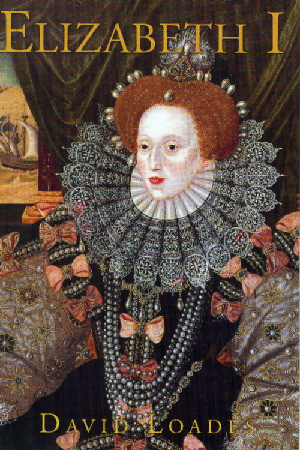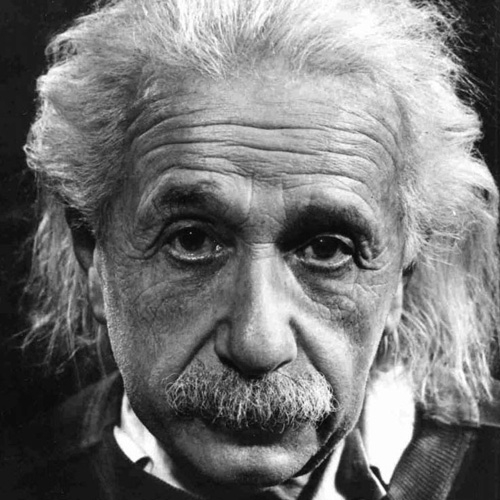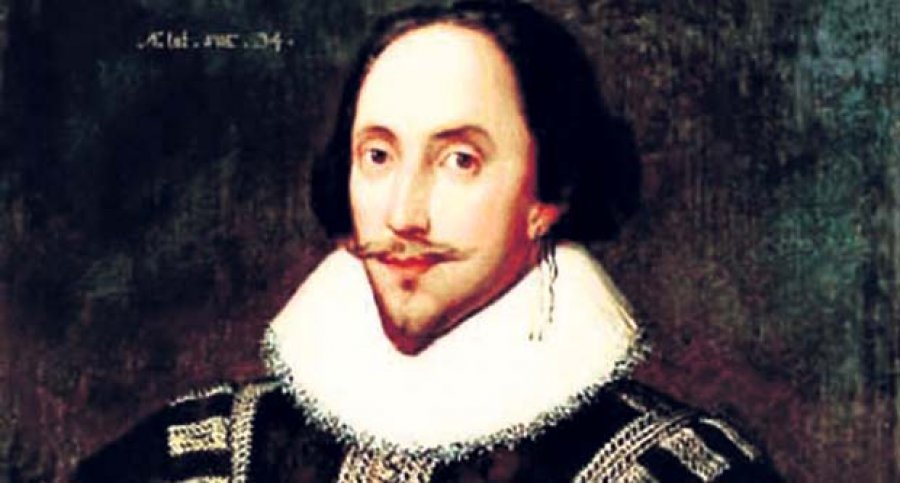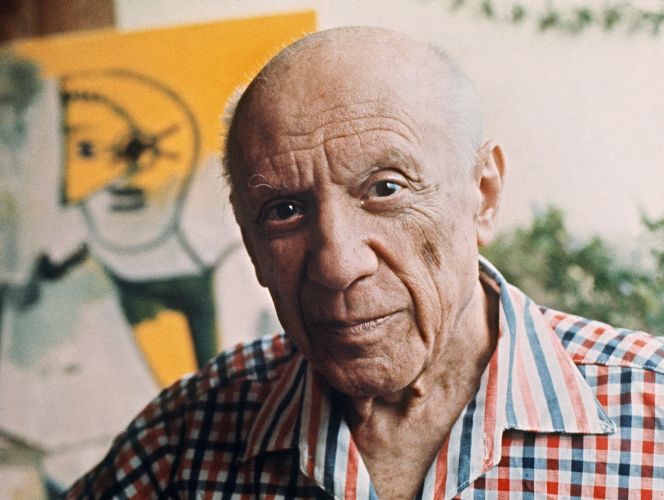Reading Biography
Познакомьтесь с биографиями известных людей.
-
Elizabeth I
 Elizabeth I was queen of England from 1558 until she died in 1603. Her reign was called the Elizabethan Age, a very exciting and glorious period in
Elizabeth I was queen of England from 1558 until she died in 1603. Her reign was called the Elizabethan Age, a very exciting and glorious period in
English history, in which England became an important world power. She was born near London in 1533.
Her father was Henry VIII and her mother Anne Boleyn, the second of the king's six wives.
When Elizabeth was 3 years old her mother was beheaded because she was accused of having a relationship with someone else. Elizabeth had an elder half sister Mary, and a younger half brother Edward.
King Henry VIII broke with the Roman Catholic Church because the pope would not let him divorce his first wife. Henry then founded the Church of England and made his country protestant.
Although Henry cared very little about Elizabeth during her childhood she received a good education and was taught well in history and philosophy. She learned many languages, including French, Italian and Latin.
When Henry died in 1547 his only son, Edward, became king but the boy king died six years later. Mary became queen and made England a Catholic country again. She didn't like Elizabeth and thought that she was plotting against her. She sent her half sister to prison in the Tower of London for two months. When she was released, she had to live in the countryside.
Mary died in 1558 and Elizabeth succeeded her. She became very popular and many people thought that she would bring back peace and stability in a time of conflict. Elizabeth was a cautious and clever queen; she knew a lot about economics and had good advisors. She returned England to Protestantism but she was not a radical religious reformer.
Although there were many young men who wanted to marry her, Elizabeth stayed alone and had no children. This was a threat to the English monarchy because without children her cousin Mary, Queen of Scots, would inherit the throne. She was a Catholic and a friend of France. Elizabeth was aware of this danger and had Mary sent to prison for many years. She was executed in 1587.
Elizabeth gave her country a lot of self confidence. During her reign it built up its sea power and ships sailed across the seas to trade in the New World. At that time Spain controlled much of the trade in the New World. Elizabeth sent Sir Francis Drake and other sea captains to raid Spanish ships and seize gold and other treasures that the Spanish had captured.
This was too much for Philip II of Spain so he decided to attack England. After years of preparation he put together a strong fleet of ships called the Spanish Armada. In 1588 the Armada sailed into the English Channel. In the battle that lasted for nine days the British defeated the Spaniards because their ships were smaller and faster. Only a few of them managed to get back to Spain. Elizabeth had celebrated the greatest victory of her reign.
The Elizabethan Age was also an age of art and culture. Many musicians, scholars and writers came to her palace. William Shakespeare was the greatest writer of the period and wrote some of the world's finest plays and poems. (Elizabethan Theatre)
The last years of Elizabeth's reign were troubled by scandals and revolts. Parliament started to criticize the queen and health problems made her weaker. She died on March 24, 1603 at the age of 69. At her wish, Mary Stuart's son, James VI of Scotland became king of England and the two countries were united.
-
Albert Einstein
 Albert Einstein was a famous scientist who completely changed the way that people saw our world and the universe. Einstein created many theories which proved that things like gravity, light, energy and matter were connected with each other. At first, very few scientists could understand Einstein’s theories but as time passed other scientists showed that he was correct.
Albert Einstein was a famous scientist who completely changed the way that people saw our world and the universe. Einstein created many theories which proved that things like gravity, light, energy and matter were connected with each other. At first, very few scientists could understand Einstein’s theories but as time passed other scientists showed that he was correct.
Albert Einstein was born in Ulm, Germany in 1879 and grew up in Munich. He wasn't a good student at school and only did things he was interested in, like science and mathematics. At a very early age young Albert started wondering about the mysteries of the universe.
After school Einstein went to Switzerland and tried to become a teacher there, but he couldn't find a job. He went to work at the Swiss patent office in Bern where he studied what other people had invented.
After divorce from his first wife, a classmate of his, Albert went to Berlin where he married his cousin Elsa. He lived in Berlin for a long time and there he developed many of his scientific theories. Einstein became so well known that he was invited to universities around the world to talk about his discoveries. In 1921 he received the Nobel Prize for Physics.
In the meantime things were starting to change in Germany. Einstein was against the Nazis and their ideas of controlling the world and killing Jews. The Nazis, in return, hated him and his theories and they burned most of his books.
Einstein decided to leave Germany and go to the United States. When World War II broke out in 1939 Einstein discovered that German scientists were working on a bomb that could kill thousands of people. He wrote a letter to the American president to warn him and suggested that the Americans start building one too.
In 1941 the American government started the Manhattan project which led to the construction of the atomic bomb. Two of these bombs were dropped over Hiroshima and Nagasaki to end the war against Japan. Einstein was horrified when he heard the news. He wanted the world to use atomic energy for peaceful purposes.
For the last twenty years of his life, Einstein lived in Princeton where he continued his scientific work. He died on April 18, 1955.
One of the most famous equations ever written came from Albert Einstein: E = mc 2. Energy is mass times the squared speed of light. This equation shows that mass can be turned to energy. Because the speed of light square is such a high number even a small amount of mass can be turned into a lot of energy.
This means, for example, that there is enough energy in a glass of water to give power to a city like London for a whole week. The problem is how to get the energy out of the mass. This equation led to the building of the atomic bomb. The first bomb only had 0.6 grams of mass but scientist turned it into enough energy to destroy a whole city.
Einstein also thought that space and time were closely related to each other. He thought that there were not three dimensions to objects but four—the fourth one was time. Other scientists, who continued his work, claimed that it is possible to travel into the past and into the future. Black holes might be tunnels that could take you back and forth in time.
According to Einstein all objects followed curved paths and get attracted by the gravity of an object. Time would pass more slowly if you are close to a very large object like a planet. This means that the clock of a plane goes faster than a clock at an airport because the plane is farther away from the earth.
From site: http://www.correctenglish.ru
-
William Shakespeare
 William Shakespeare is often called the world's greatest playwright. He wrote comedies, tragedies and historical plays in England in the last part of the 16th and the early 17th century.
William Shakespeare is often called the world's greatest playwright. He wrote comedies, tragedies and historical plays in England in the last part of the 16th and the early 17th century.
William Shakespeare was born in 1564 in the English town of Stratford-upon-Avon. His father was a businessman and the town's mayor. His mother came from a family that owned land near Stratford. William had three younger brothers and two younger sisters.
Like other boys of middle-class families, William attended a grammar school in Stratford where he got a good education and also learned Latin.
When William was 18 he married Anne Hathaway. They had three children, first Susanna and then twins, a son named Hamnet and a daughter named Judith. Hamnet died when he was 11.
We don't really know what William did during the following years but in 1592 he went to London to work as a writer and actor. It was a difficult job and only the best found work in London.
From 1592 to 1594 the Black Death spread across England. Many public places were closed and plays couldn't be performed either. Shakespeare spent these years writing sonnets and poems.
When the theatres opened up again in 1594 Shakespeare joined the best acting company of the country—Lord Chamberlain's Men. It had the best actors, the best writers and the most famous theatre—the Globe.
The Globe was a huge amphitheatre without a roof. The seats were curved around a stage that was built on many levels.
Plays always started at 2 o'clock in the afternoon. People who didn't have the money to buy a seat were allowed to stand in the front of the stage. All kinds of people came to see the shows– housewives, children, noblemen and even visitors from other countries. The company also presented special plays for kings and queens.
Shakespeare and his fellow actors were responsible for everything in the Globe theatre. They owned the building and the costumes, they wrote the scripts and they also shared the profits that they made. The actors and writers of the theatre worked together successfully for many years.
In the twenty years that he worked on stage Shakespeare wrote 37 plays. They can be put into three big categories:
- Tragedies are plays that show the downfall of a main character. His most famous tragedies are Hamlet, King Lear and Macbeth.
- Comedies are funny plays that have a happy ending most of the time. A Midsummer Night's Dream, As You Like It and The Merry Wives of Windsor are among the most popular.
- Historical plays are dramas about the lives of some of England's most powerful kings like Henry IV or Richard II.
William Shakespeare retired from the theatre in 1610 and went back to his home town Stratford, where he lived until his death in 1616.
At that time the people of England did not know that their country's greatest poet and playwright had died. They thought of him only as a popular actor and writer.
-
Pablo Picasso
Pablo Picasso was one of the greatest artists of the 20th century.
He experimented in many different styles and changed the world of art during his time.
Early life
Pablo Picasso was born in Malaga, Spain in 1881. His father was a drawing teacher. At 10 Pablo became his father's pupil and at the age of 13 he held his first exhibition.
His family moved to Barcelona in 1895 where Pablo joined an art academy. In his early period the young artist painted life as he observed it around him – in cafes and on the streets. As a young man he took interest in masterpieces of famous artists like El Greco and de Goya.
At the turn of the century, Picasso went to Paris, which was, at that time, the centre of art and literature.
Blue and Rose period
In 1901 a close friend of Picasso shot himself. This had a great impact on Pablo. He was very sad and began painting his pictures in grey and blue tones instead of bright, vivid colours. This part of his career is called his Blue Period (1901 – 1904).
Later on, he changed his painting style and started using more earth colours – rose, pink or brown. He liked to paint pictures of circus life with dancers and acrobats. This rose period lasted until 1907.
Cubism
When Picasso started working with his friend and fellow painter Georges Braque in Paris they started experimenting with a new style that was called cubism.
Picasso and Braque didn't want to show nature as it really was. They thought that all objects in nature had geometric forms. In cubism, objects were cut into many flat shapes, which looked like a puzzle. All the sides of a person's face, for example, were shown at once, maybe even with three eyes instead of two. Cubist painters wanted to show all parts of an object from one angle.
Picasso and Braque also experimented with other materials, like cloth and newspaper clippings, which they glued onto the canvas. This technique became later known as collage.
Classicism
In 1917 Picasso went to Rome to design costumes and scenery for a Russian ballet company. During this period he fell back to classical forms and painting techniques but never gave up experimenting with cubism.
Civil War
In 1936 Civil War broke out in Spain. During this period he painted his masterpiece Guernica. It shows the terrified people of the ancient Spanish town which was bombed during the Civil War. Picasso was shocked by this inhuman act and in his painting he shows people running in the streets and screaming with their mouths wide open. To display his sadness and anger he used only black and white as well as shades of grey.
During World War II Picasso lived in Paris which, at that time, was under Nazi occupation. The Nazis didn't like his modern paintings and Picasso had to hide them in a secret vault in the Bank of France.
Later life
After the war Picasso moved to a big house in the southern part of France. There, he continued experimenting with paintings and sculptures.
He continued his work up to his death in 1973. Picasso was known as a very moody person and he also displayed this in his paintings. Sometimes he was thoughtful, even sad, and at other times he could be very humorous. Picasso was never satisfied with his own work and he never stopped experimenting. For his great imagination and skill he is called "El Maestro" of modern art.

